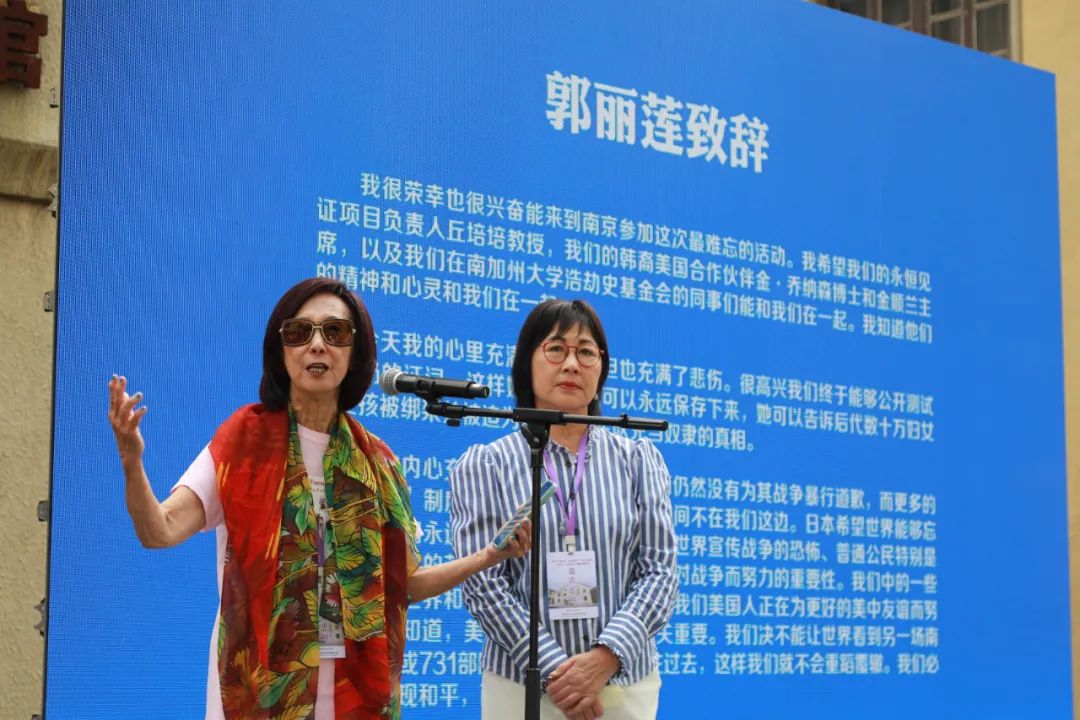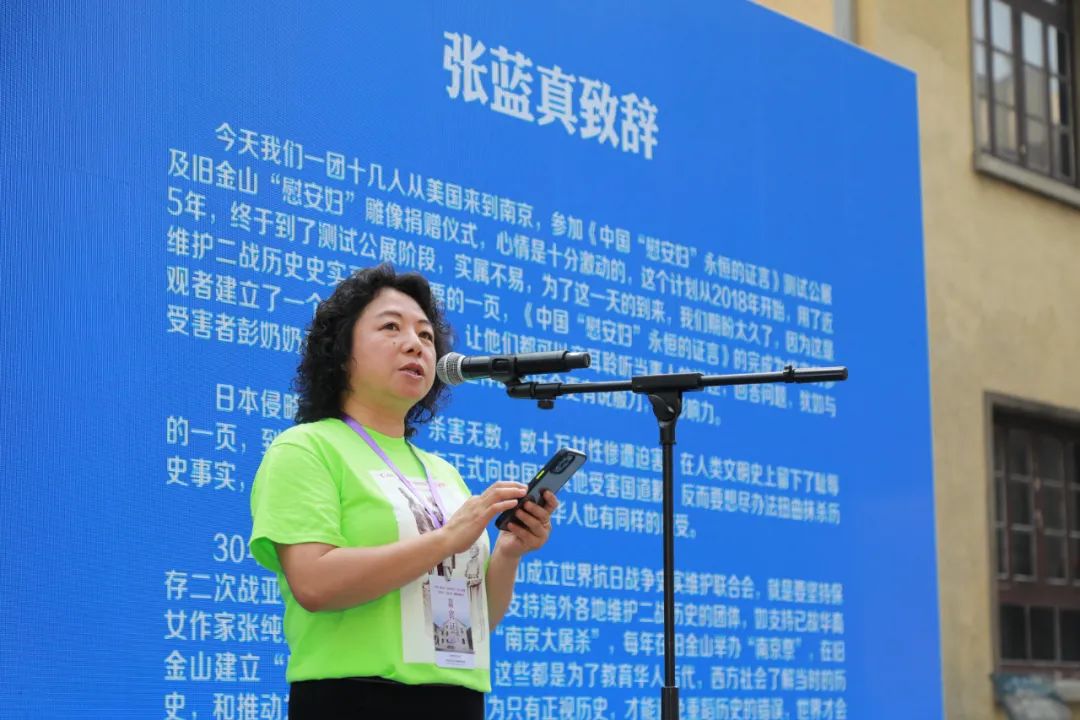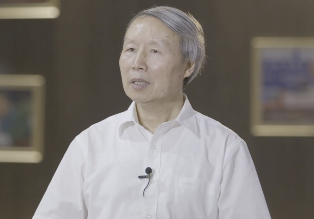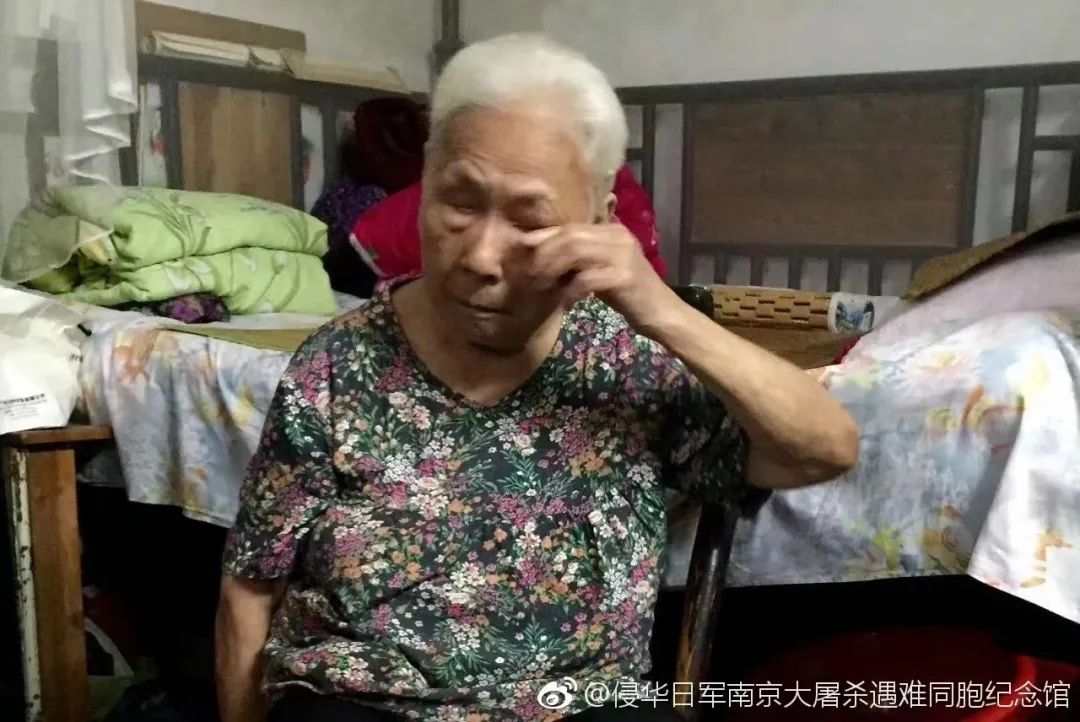Adding to Historical Memory: Another “Sex Slaves” Themed Statue Unveiled in Nanjing
On the morning of October 14, the Memorial Hall of the Nanjing Massacre Victims held “The Eternal Testimony of Chinese ‘Comfort Women’” Beta Test Launch & “‘Comfort Women’ Column of Strength” Sculpture Donation Ceremony in the Nanjing Museum of the Site of Liji Lane Sex Slaves Station.
The statue is a one third-size version of a monument dedicated to the “Sex Slaves” unveiled at St. Mary Square in San Francisco, the United States, on September 22, 2017. Both share the same name.
The statue is a donation from the US-based Comfort Women Justice Coalition. Established in 2015, the organization has done much fruitful work over these years to commemorate women and girls forced into sexual slavery by the Japanese army during World War II. Lilian Sing and Julie Tang, co-chairs of the Comfort Women Justice Coalition and retired San Francisco Superior Court judges, attended the unveiling ceremony.
The ceremony for unveilingthe same statue at St. Mary Square was led by the coalition, Sing said. Viewing the monument from the ground is a figure of an elderly woman meant to be Kim Hak-sun from the Republic of Korea, the first woman to give public testimony about her experience as a “Sex Slave”. The statue depicts three young girls from China, the Republic of Korea, and the Philippines, holding hands in a back-to-back posture and looking forward with a solemn expression. “This monument bears witness to the suffering of tens of thousands of women and girls who were sexually enslaved by the Japanese army in thirteen countries and regions before and during World War II,” the inscription says.
“We want peace, not war. So far, Japan hasn’t apologized for forcing women to act as ‘Sex Slaves’. I hope young people from around the world could come to Nanjing to look back onits painful history and also look at the new, beautiful city today. We must educate the next generation to jointly work for world peace and justice,” said Sing.
“We will stand up and fight as long as Japan doesn’t apologize for sex slavery. Our common goal is to eliminate sexual violence against women and promote world peace,” Tang said.

Retired San Francisco Superior Court judges and co-chairs of the Comfort Women Justice Coalition Lilian Sing (L) and Julie Tang
Jennifer Cheung, president of Global Alliance for Preserving the History of WWII in Asia, was also present at the ceremony. “We have been waiting for this a long time. We’re writing an important page in preserving the history of World War II. From the annual Nanjing Memorial in San Francisco to the “Sex Slaves” statue placed in the city, we are trying to help Western people and descendants of overseas Chinese learn about this history, and encourage the victims to fight for justice. Only when we face up to history, then we can avoid the mistake of repeating the history,” Cheung said.

President of Global Alliance for Preserving the History of WWII in Asia Jennifer Cheung
Phyllis Kim, executive director of Comfort Women Action for Redress and Education, pointed out that it is increasingly important to protect the voices and experiences of the victims, as the Japanese government is working harder to erase and whitewash the wartime crimes they committed.

Phyllis Kim, executive director of Comfort Women Action for Redress and Education
The donation is meant to establish and consolidate again the historical facts behind “Sex Slaves”, and fight against historical revisionism, said Su Zhiliang, a professor at Shanghai Normal University and director of the university’s research center for “Sex Slaves”. It also comes as a move to call on people around the world to remember history and cherish peace, and a move that powerfully echoes the international advocacy movement for the building of “Sex Slaves” Teenager Girl Portraits.

Professor Su Zhiliang
The issue of “Sex Slaves” began to surface in the early 1990s when some surviving victims of the Japanese army’s “Sex Slaves” System bravely spoke up, and soon drew worldwide attention. Later, “Sex Slaves” statues were established in countries like China, South Korea, and the US. The new statue will add another to the list of “Sex Slaves” themedstatues at the square in the Nanjing Museum of the Site of Liji Lane Sex Slaves Station. The earlier one features Pak Yong-sim from the Democratic People’s Republic of Korea and other victims of the Japanese army’s “Sex Slaves” System.
After the unveiling ceremony, the visitors placed chrysanthemums in front of the “Sex Slaves” statue.
On the same day, the “Eternal Testimony” human-machine interactive system went online in the museum. The system offers a complete record of oral testimony presented by Peng Zhuying, a victim of the Japanese army’s “Sex Slaves” System. With technical support from the USC Shoah Foundation, the system adopts a three-dimensional human-machine interaction model. It allows visitors to talk to Peng face-to-face and ask questions to learn about the historical facts regarding the victims of the Japanese army’s “Sex Slaves” System.
Peng was born in July 1929 in Yueyang City, central China’s Hunan Province. In 1938, Japanese troops invaded her hometown and launched a toxic gas attack. Her mother and younger brother died during the attack, while Peng, then nine years old, went blind in both eyes. In 1944, 15-year-old Peng was arrested by Japanese soldiers and imprisoned for a month. Later, she escaped after the Japanese soldiers left. While in detention, she suffered sexual violence, humiliation, and beatings, which left a lifetime of pain and rendered her infertile. On July 19, 2018, staff members of the Memorial Hall and the museum visited Peng in Yueyang. It was then that Peng finally got up the courage to come forward publicly about her experience that had been buried in her heart for 80 years.

Peng Zhuying, a victim of the Japanese army’s “Sex Slaves” System
Because of her old age, Peng wasn’t able to attend the ceremony. But she expressed her hope for world peace in a video recorded with the help of volunteers.
Statues are a reminder of history. With the international advocacy movement for building “Sex Slaves” statues sweeping around the world, more than 80 “Sex Slaves” themed statues have been erected. The new statue presented to the Memorial Hall resonates with the advocacy movement. This will greatly boost international exchanges on the “Sex Slaves” issue. The “Eternal Testimony” program aims to help audiences strike a chord with the victims of the “Sex Slaves” System with the help of technology. The purpose of digging into and recording historical truth is to avoid repeating the history.

Photo by Nanjing Daily reporter Sun Zhongyuan
The Nanjing Museum of the Site of Liji Lane Sex Slaves Station is located at No. 2-18, Liji Lane, Qinhuai District in Nanjing City, east China’s Jiangsu Province. In December 1937, Japanese troops converted No. 2 Liji Lane into “Dongyun Sex Slaves Station” and No. 18 Liji Lane to “Guxianglou Sex Slaves Station” after occupying Nanjing. Liji Lane is one of the few sites of “Sex Slaves” stations in the Chinese mainland identified by surviving victims of the Japanese army’s “Sex Slaves” System, and so far the largest site of its kind in Asia. In 2019, the site was listed among the eighth group of major historical and cultural sites protected at the national level. Since it opened on December 1, 2015, the museum has provided a lot of assistance to registered surviving victims of the “Sex Slaves” System, and identified approximately another 30 victims. At the same time, the museum has continued to collect historical documents and materials related to “Sex Slaves”, attended domestic and international academic meetings, and enhanced international exchanges and historical research.

